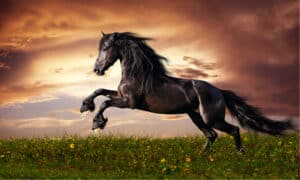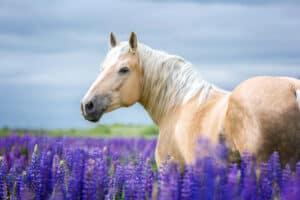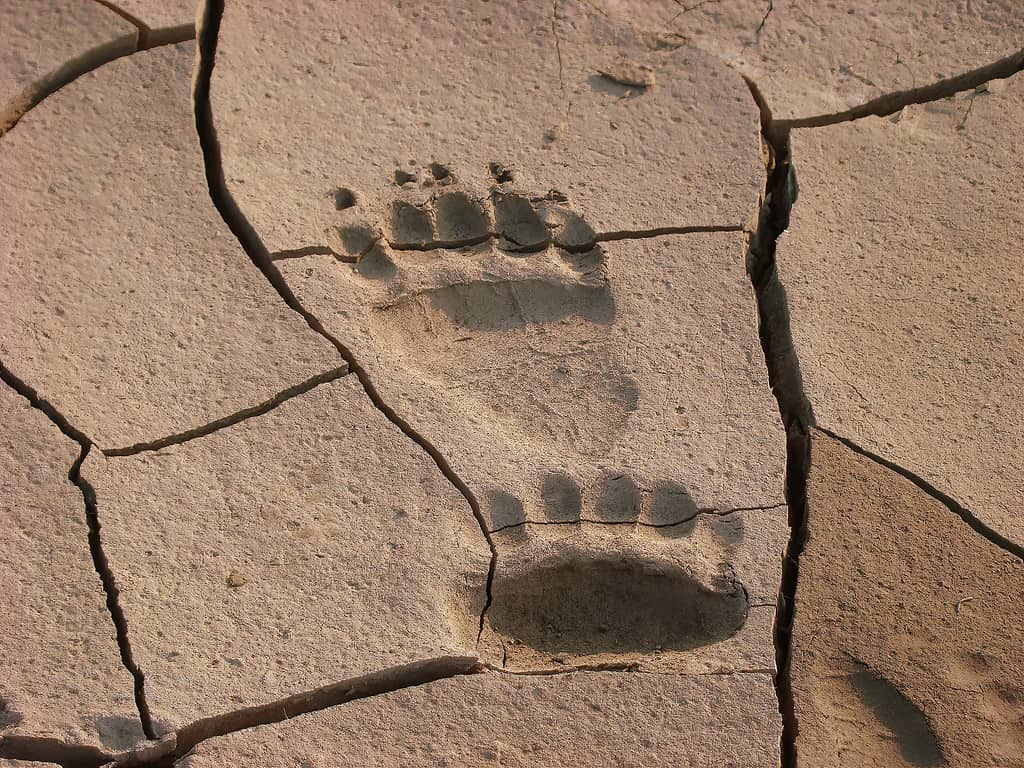
It’s hard to think about a horse being as big as a grizzly!
©John charles hansen/Shutterstock.com
Would you believe us if we tell you there was a horse that was bigger than most land mammals? The discovery of the horse species that was bigger than the grizzly bear is truly amazing. It is not just because it was found in North America, but also because of its size.
This particular horse species is Equus giganteus, an extinct horse believed to be a prehistoric species that lived during the Pleistocene era and was first discovered in Idaho in 1932.
The fossilized remains of this species were examined by paleontologists, and they were able to determine that it was indeed a distinct species of the horse.
Below, we discuss the massive size of the horse bigger than a grizzly, and how it compares to other species today.
The Equus Giganteus
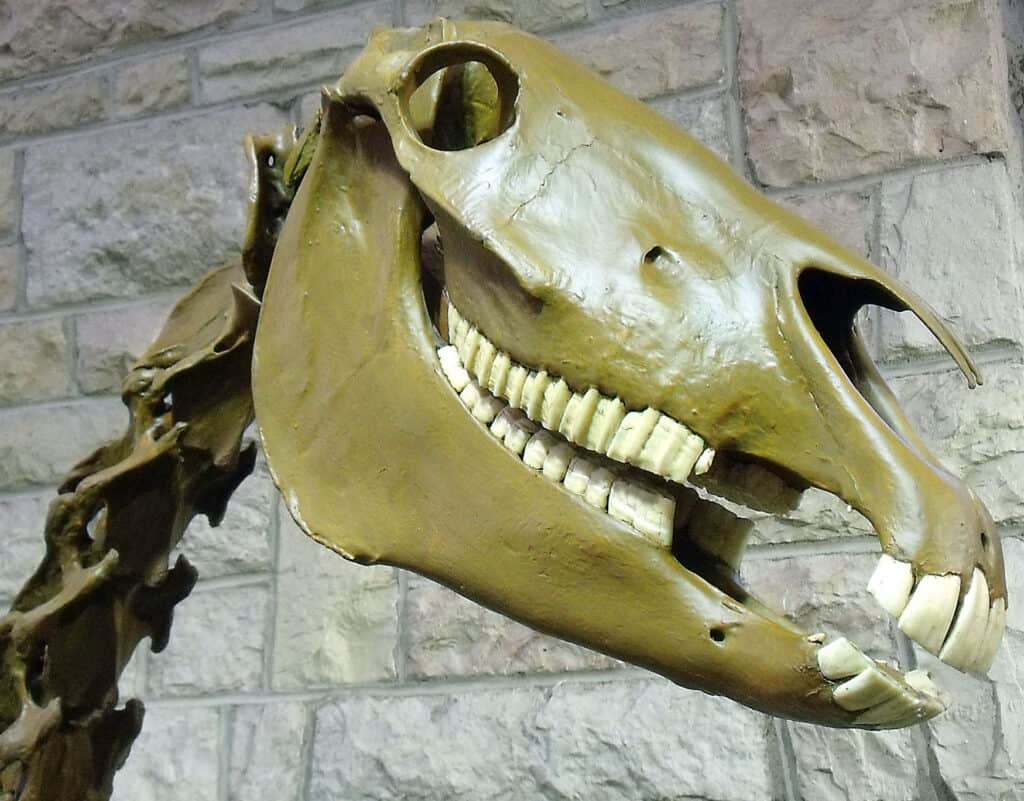
Equus giganteus probably weighed up to 3,300 pounds and stood at about 6.6 feet tall.
©Mike Beauregard / Creative Commons Attribution 2.0 Generic license. – License
The Equus giganteus existed from the Blancan Period (which overlaps with the early Pliocene Epoch of the geologic time scale) to about 12,000 years ago, near the end of the Pleistocene Epoch. The literal meaning of this horse’s name is “giant horse.” It befits the animal, as it was essentially a gigantic modern horse.
According to the researchers who discovered this species, it had an estimated weight of around 2,600 and 3,300 pounds. This means that it could weigh more than two adult grizzly bears together!
It would be interesting to see how the Equus giganteus towers over other giant mammals today. Below is a list of mammals being compared to Equus Giganteus.
Equus Giganteus and Grizzly Bear Size Comparison
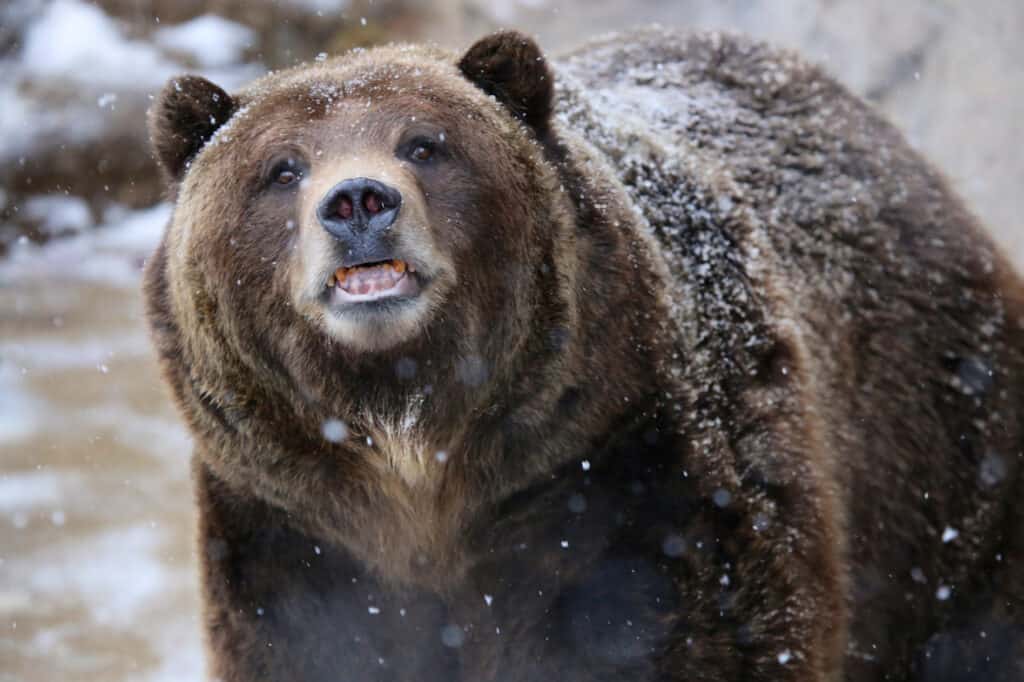
Grizzly bears are much smaller than Equus giganteus
©Steve Boice/Shutterstock.com
If the Equus giganteus still existed today, it would be easy to compare it to a grizzly bear in size. The Equus is unquestionably bigger than the grizzly, weighing more than twice the latter’s size!
The grizzly bear is a brown bear subspecies found in North America. Grizzlies are brown, although their fur can appear white-tipped or grizzled, giving them their name. Grizzly bears are legally protected in the mainland United States, but not in Alaska, despite recent controversial attempts to repeal such laws.
The Equus giganteus is a species of horse that also lived in North America. It was a very large species of horse, with males reaching up to 6.6 feet high at the shoulder and weighing from 2,600 to 3,300 pounds. The females were generally smaller than their male counterparts, reaching a maximum height of 5.2 feet at the shoulder and weighing up to 1,200 lbs.
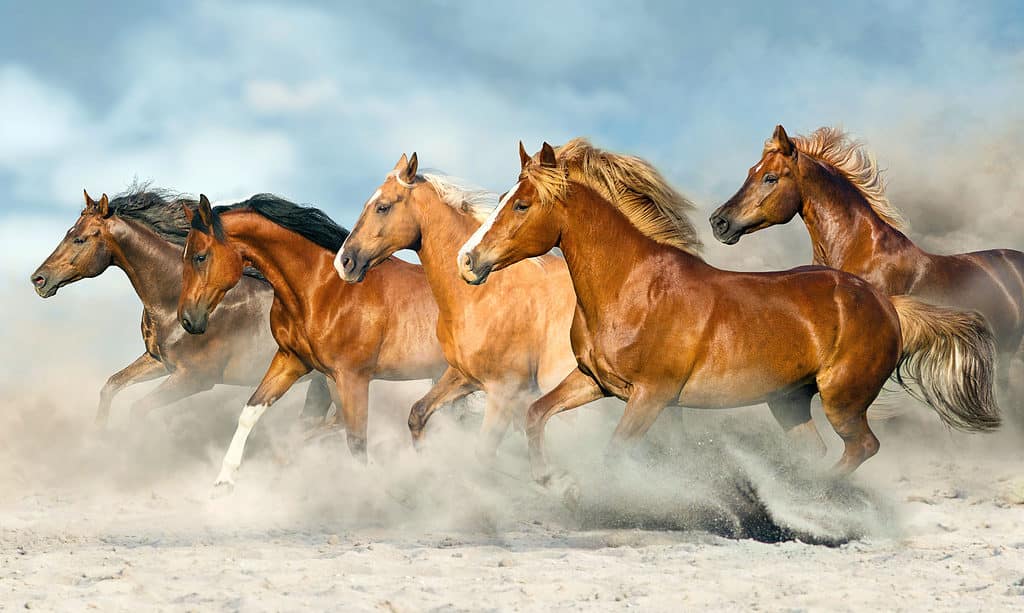
Modern horses haven’t benefitted from natural selection, having been bred by humans for specific purposes.
©Callipso88/Shutterstock.com
On the other hand, grizzly bears are also large animals, with males reaching up to eight feet long and weighing up to 600 lbs (270 kg). Females are generally smaller than their male counterparts but can still reach six feet long and weigh as much as 300 lbs (135 kg).
Modern Horses vs. Equus Giganteus
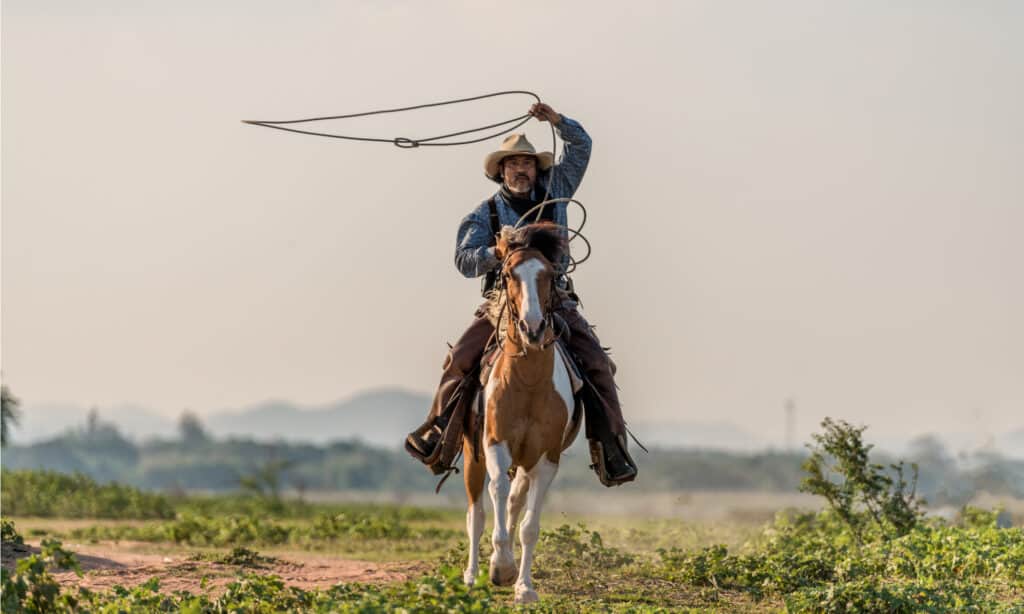
©chaowat kawera/Shutterstock.com
Modern horses are the perfect animals for many reasons. They can be used for riding, racing, or simply as a workhorse on a farm. However, modern horses are quite small compared to Equus giganteus in terms of size and weight. For instance, the average height of a modern horse is around four feet, and it weighs between 900 to 2,000 pounds, depending on the breed.
The difference between these two horses can be attributed to their evolutionary history. While Equus giganteus was able to grow so big due to evolution and natural selection over thousands of years, modern horses have been domesticated by humans. Experts bred them for specific purposes, such as riding or pulling carts; therefore, they are smaller than their wild ancestors.
Bison vs. Equus Giganteus
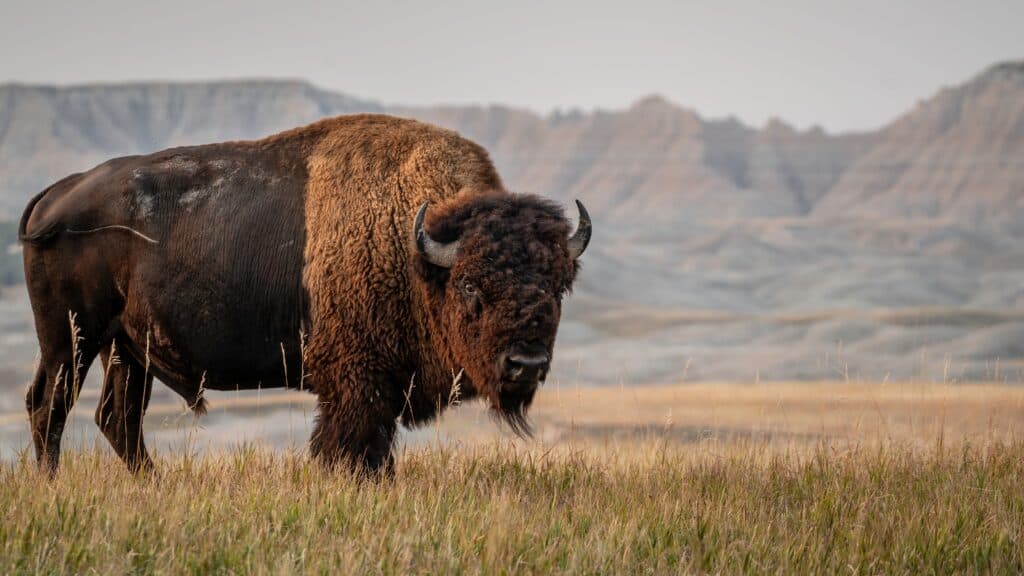
Bison can weigh up to 2,000 pounds while Equus gigantius weighed around 2,600 pounds.
©Tim Malek/Shutterstock.com
We all know that bison are huge mammals native to North America and are found in many places, including Alaska and Canada. They eat grass and other plants that are found around lakes or rivers, which helps keep those areas healthy by preventing soil erosion during floods or droughts caused by climate change.
Now, how big is a bison? Bison are large animals that can weigh as much as 2,000 pounds. They have long, thick hair and horns that are about two feet long. On the contrary, Equus giganteus was a horse that typically weighed around 2,600 pounds.
The difference in size between these two animals is quite remarkable, but both animals have their own benefits. Apparently, Equus Giganteus is bigger than a bison.
Rhinoceros vs. Equus Giganteus

The rhinoceros is the second largest land mammal behind the elephant and can weigh up to 6,000 pounds.
©iStock.com/EcoPic
The rhinoceros is a large herbivorous mammal native to Africa and Asia. Rhinos are some of the largest animals on Earth, and they are also among the world’s most endangered. The two species of rhinoceros that exist today are the white rhinoceros and the black rhinoceros.
The white rhinoceros is native to southern Africa, where it can be found in grasslands and open woodlands. It can weigh from 4,000 to 5,500 pounds and grow up to 11.5 feet long. The black rhinoceros is native to eastern and central Africa; it weighs around 1,760 to 3,090 pounds on average and grows up to 9 to 12 feet long.
Considering the size the rhinoceros can grow to, it is deemed bigger than the Equus giganteus. The rhinoceros is the second largest land mammal behind the elephant and can weigh up to 6,000 pounds. The Equus giganteus, on the other hand, was theorized to have been able to grow up to 9 feet tall and weigh up to 3,300 pounds.
Are Modern Horses Direct Descendants of Equus Giganteus?
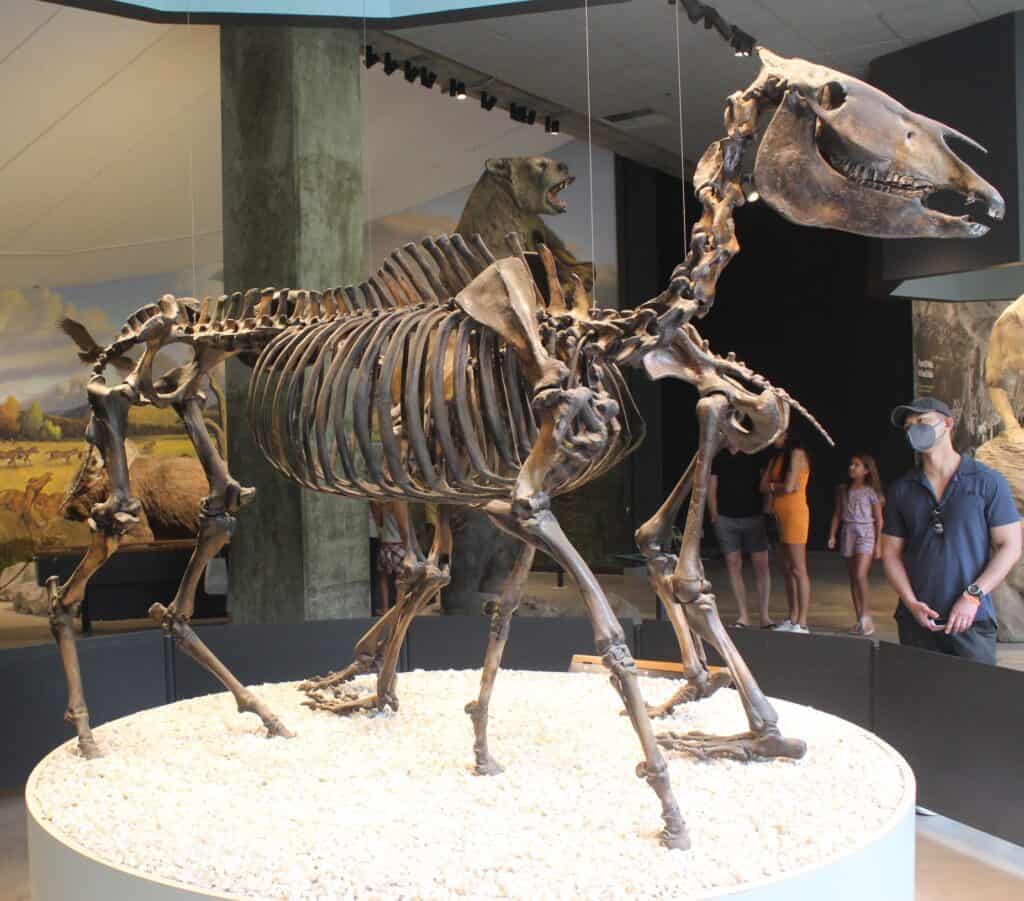
Interestingly, modern North American Horses are not direct descendants of the ancient varieties. All American wild horse species died off about 12,000 years ago during the great American extinction.
©Jonathan Chen / Creative Commons Attribution-Share Alike 4.0 International license. – License
In the Western United States, there are herds of “wild” horses roaming free across the plains. Are these the ancestors of ancient breeds like Equus giganteus? The answer is no. Equus giganteus and other prehistoric breeds were driven to extinction during the last ice age – along with mammoths and dire wolves. Horses were not wiped out in other parts of the world, however, and about 4,000 years after North American horse breeds disappeared, people in other parts of the world began domesticating horses.

Hernando De Soto, a Spanish explorer, at the Mississippi River with soldiers and Catholic priests on May 8, 1541.
©Christine_Kohler/iStock via Getty Images
North America was horseless until the Spanish brought them back home to where they originally evolved in the 1400s. Many of these domesticated horses escaped captivity and made their way back to their former range and spread across the nation. Native Americans began to capture and ride the horses, spreading them further across North America.
The photo featured at the top of this post is © toseeg/Shutterstock.com
Sources
- U.S Department of Interior, Available here: https://www.doi.gov/blog/15-facts-about-our-national-mammal-american-bison
- Prehistoric Fauna, Available here: https://prehistoric-fauna.com/Equus-giganteus
- National Geographic, Available here: https://www.nationalgeographic.com/animals/mammals/facts/grizzly-bear
- Nature Middle East, Available here: https://www.natureasia.com/en/nmiddleeast/article/10.1038/nmiddleeast.2021.83
Thank you for reading! Have some feedback for us? Contact the AZ Animals editorial team.



